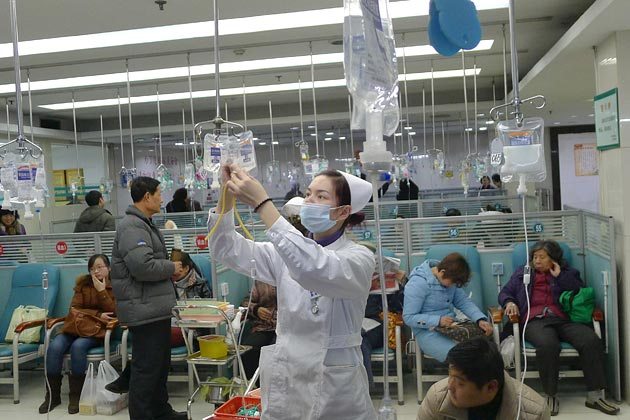After the series of economic reforms firstly launched in December 1978 involving the decollectivization of agriculture, opening up the economy to foreign investment, permission of entrepreneurship, and privatization of some state-owned industries, China’s GDP annual growth rate had been above 8% most of the time in the last four decades before moderating to more than 6% in recent years. During this period, the healthcare system in China has also undergone dramatic changes.
After the Chinese Communist Party took control of China in 1949, the number of city dwellers was relatively insignificant; therefore, the Rural Co-operative Medical Scheme (RCMS) was established to meet the medical needs of rural areas, where the majority of the Chinese population could be found. RCMS at that time was a pre-payment plan based on income levels of individuals, the collective welfare fund of a village and subsidies from the government. The RCMS hit the peak coverage of 85% of the entire population in China during the Cultural Revolution in the 1960s. With the reform of the agricultural sector and the emergence of townships in the 1980s, the RCMS collapsed such that its coverage was only around 10% in 1984.
In April 2009, the publishing of the Opinions of the CPC Central Committee and the State Council on Deepening the Reforms of the Medical and Health System initiated another round of major healthcare reforms, encompassing the provision of basic medical services, strengthening primary care, improving clinical services, health insurance and pharmaceuticals. Ultimately, the Chinese government aims to provide basic medical services to all residents, which is achieved through the national basic medical insurance schemes covering urban workers, urban residents and rural population. According to the National Development and Reform Commission, over 95% of the Chinese population in both urban and rural areas are currently covered, versus about 50% and 13% respectively in 2003.
Since the out-of-pocket payments for the insured had been relatively high, critical illness insurance was introduced in China in 2012 to provide reimbursement of high medical expenditure associated with critical illness, relieving people’s economic burden.
China’s National Health and Family Planning Commission (now known as National Health Commission), issued in October 2016 the Healthy China 2030 Planning Outline, which represents the most recent comprehensive framework on the goals and plans of the country’s healthcare reform. The main objectives include ongoing improvement of people’s health conditions and notable expansion of the health industry by promoting healthy lifestyle, encouraging exercise, and lifting service quality of healthcare providers, among others.





Asia Pacific Wealth and Asset Management Markets to Grow Substantially in the Coming Years